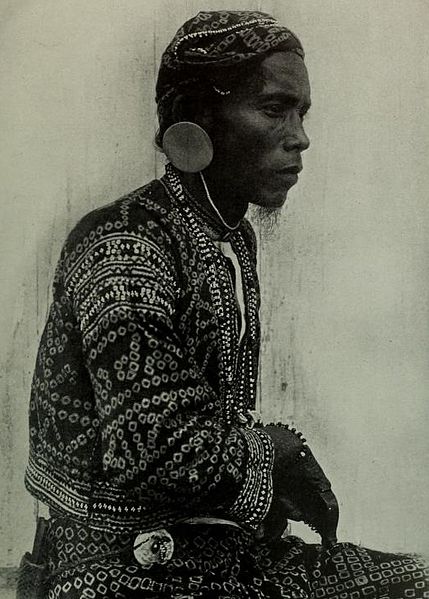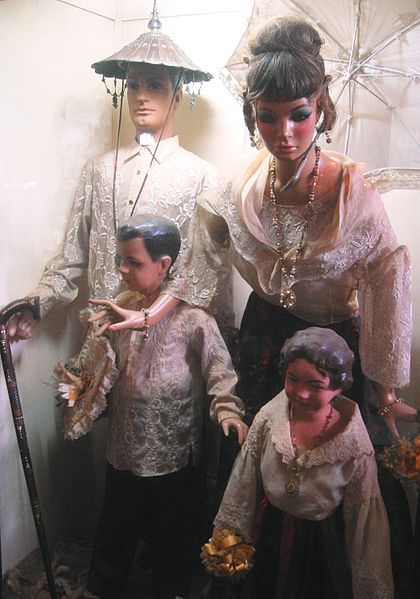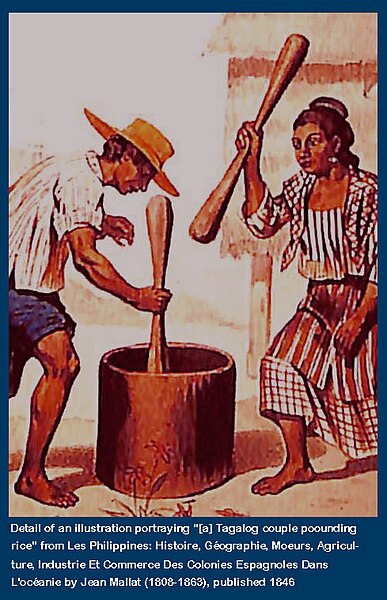Datu is a title which denotes the rulers of numerous Indigenous peoples throughout the Philippine archipelago. The title is still used today, though not as much as early Philippine history. It is a cognate of ratu in several other Austronesian languages.
A Bagobo matanum (chieftain) who leads communities along with elders (magani) and female shamans (mabalian)
Costume of a family belonging to the principalía during the 19th century. Picture taken from the exhibit in Villa Escudero Museum in San Pablo Laguna, Philippines.
A Manobo bae, a female tribal leader equivalent to a datu, in the 2015 Kaamulan Festival
A Lumad datu performing in the 2018 Kaamulan Festival of Bukidnon
Maynila (historical polity)
In Philippine history, the Tagalog bayan of Maynila was one of the most cosmopolitan of the early historic settlements on the Philippine archipelago. Fortified with a wooden palisade which was appropriate for the predominant battle tactics of its time, it lay on the southern part of the Pasig River delta, where the district of Intramuros in Manila currently stands, and across the river from the separately-led Tondo polity.
Detail of an illustration from Jean Mallat's 1846 book "The Philippines: history, geography, customs, agriculture, industry, and commerce of the Spanish colonies in Oceania", showing "a Tagalog couple pounding rice." The mortar depicted is known as a lusong, a large, cylindrical, deep-mouthed wooden mortal used to de-husk rice. Linguist Jean Paul Potet explains that the Old Tagalog name of the Pasig River delta, in which Tondo was located, was derived from this mortar.





